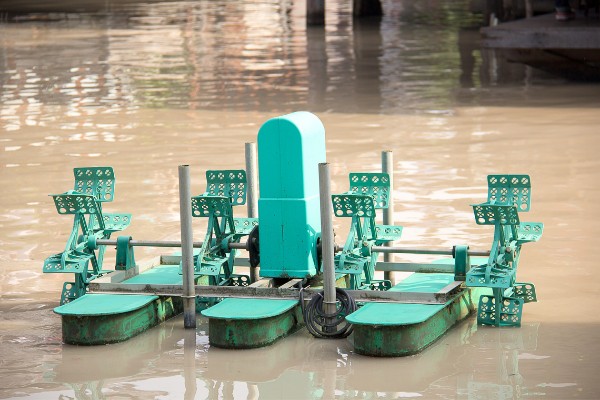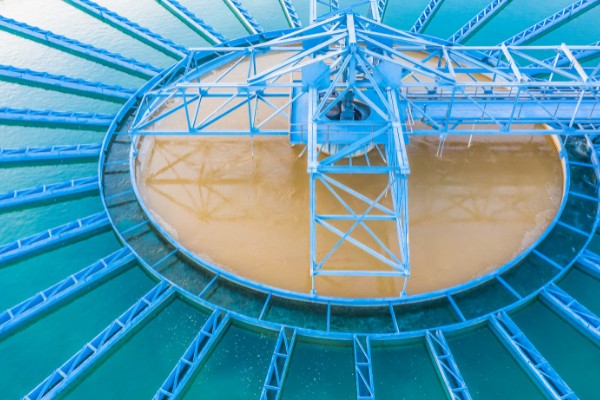SYNTHETIC ORGANIC POLYMER FLOCCULANT

Synthetic organic polymer flocculant plays an indispensable role in waste (sewage) water treatment. Over the past 30 years, The tempo of organic polymer flocculants production has quickened up, with an average annual growth rate of 12% to 15%. Depending on current water treatment chemicals used in water and wastewater treatment in the United States, the consumption growth rate of synthetic polymer flocculants is much faster than that of inorganic flocculants. The technological development of many polymer flocculants tends to maturely and realize large-scale production. In our country, polyacrylamide (PAM) and its derivatives account for about 85% of the total synthetic polymer flocculants. At present, there are more than 40 PAM manufacturers in our country, with a full production capacity of about 8,000 tons per year. However, compared with developed countries, a particular gap in the quality of PAM and its derivatives still exist in our country.
Despite many apparent advantages of Synthetic organic polymer flocculants, they are not without problems, such as short-term store time, high monomer content, or unsatisfactory relative molecular weight.

The development trends of synthetic polymer flocculants are
- Develop towards ultra-high molecular weight and low monomer content. Due to the large relative molecular mass of the agent, the strong ability to absorb colloids and suspended particles in water, They can achieve the application effect of low dosage of the agent and good flocculation effect. At present, the relative molecular mass of high-quality polyacrylamide in my country is more significant than 10 million. Compared with similar foreign products (relative molecular assembly of 15 million), the performance gap is narrowing. To reduce the toxicity to the human body during the PAM application process, we have made significant progress in reducing the content of PAM monomers. For example, in the study of Changchun Institute of Applied Chemistry, the relative molecular mass of the drug is greater than 12 million, and the free monomer content is less than 0.05%. The product has good solubility.
- Accelerate the development of agricultural products-cationic polymer flocculants. At present, the substitution degree of cationic derivatives of polyacrylamide produced in our country is not high enough. The relative molecular weight of the preparation process is lowered, which is still a big gap comparable to that of foreign cationic polyacrylamide reaching 10 million. Cationic polyacrylamide is an indispensable agent in sludge dewatering treatment. In the United States, Japan, and other countries, cationic flocculation has accounted for about 60% of the total amount of synthetic flocculant and has kept increasing at a rate of over10% in recent years. Still, At present, cationic flocculants only account for about 6% in our country, among which most are low-grade products. This has become a "bottleneck" restricting the development of waste (sewage) water treatment in our country, especially sludge dewatering. The technical research of cationic polyacrylamide has been strengthened in our country. Take Zhejiang Research Institute of Chemical Industry and other units as an example. They have developed products of good application performance, such as Copolymer of dimethyl amino ethyl methacrylate, methyl chloride (DMC) monomer, and acrylamide (DMC—AM).
- Develop amphoteric/amphiphilic polymer flocculants. Amphoteric polymer flocculants refer to polymers containing both anionic and cationic groups on the macromolecular chain. While the anionic groups contain carboxylic acid, sulfonic acid, and sulfuric acid, the cationic groups are tertiary amines and quaternary ammonium salts. The amphiphilic macromolecular flocculant is a polymer containing both hydrophilic and lipophilic groups on considerable molecular weight. The synthesis of amphoteric polymer flocculants is generally accomplished by free radical polymerization using vinyl monomers containing anion and cation groups. It can also be achieved through chemical modification. The preparation of amphiphilic polymer flocculants is more complicated. Generally, tool methods are applied (including heterogeneous tools, homogeneous copolymerization, micellar copolymerization) and macromolecular reaction methods.
- Develop multifunctional organic polymer flocculant. Industrial water and wastewater treatment processes involve not only water purification but also equipment and pipeline maintenance issues. Therefore, purification, corrosion inhibition, scale inhibition, and sterilization are all critical. The traditional approach is to use multiple water treatment agents separately. Some experts and scholars have gradually researched multifunctional water treatment agents to simplify the process, reduce equipment, facilitate operation, and improve efficiency. Water treatment agents with multiple functions, such as flocculation, corrosion inhibition, scale inhibition, and sterilization, have already developed in foreign countries. In the mid-1980s, domestic researches on multifunctional water treatment agents began to rise. They mainly focus on multifunctional water treatment agents. Use natural macromolecules as raw materials, achieve chemical modification through etherification and grafting, and introduce -COO-, -SO32-,- PO43- and other activist groups on macromolecules. In which multiple functions are achieved, such as flocculation, corrosion inhibition, and scale inhibition. For example, the South China University of Technology developed the CG-A series, which can be used in oilfield sewage. It has an excellent dual function of flocculation and corrosion inhibition during treatment. Therefore, the development of multifunctional organic polymer flocculants is also an important trend in synthesizing organic polymer flocculants. The researched flocculants have multiple functions: purification, corrosion inhibition, scale inhibition, and sterilization.
- Develop towards the direction of organic-inorganic composite flocculant. As the water quality becomes more and more complex, a single water treatment agent can no longer meet water treatment requirements. The research of composite flocculants is appeared and developed rapidly. The composite flocculant has advantages of both types. In addition, this type can enhance flocculation performance through its synergistic effect. There are two preparation methods for composite flocculants: physical mixing and chemical synthesis. In recent years, scientific researchers have made particular progress in researching, developing, and applying organic-inorganic composite flocculants. These composite flocculants have achieved satisfactory results when used in the treatment of various sewage.
- Develop selective flocculants. Selective flocculants are the latest research topic. They can be used in complex colloidal systems to make one part of the particles flocculate and settle. In contrast, the other part remains stable and dispersed. At present, the commonly used products are hydrolyzed polyacrylamide (HPAM) and polyvinyl acetate-maleic anhydride copolymer. They are mainly used in oilfield clean water drilling and low-solid non-dispersed drilling fluids. They are also widely used in the field of water-based mineral processing. The technical difficulty lies in controlling the selective adsorption of flocculants, limiting the promotion and application of selective flocculants in the industry.